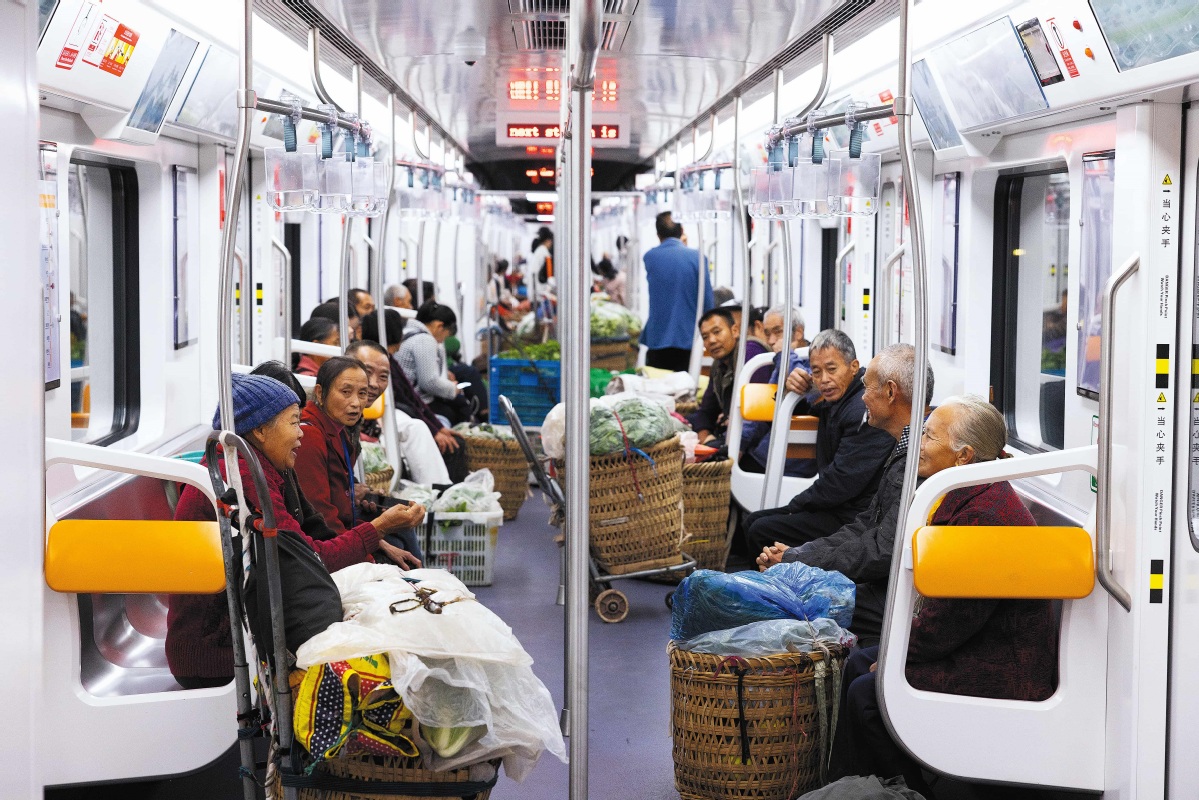'Back baskets line' enlivens Chongqing
Subway connecting rural and urban areas a vibrant symbol of development


Chongqing Rail Transit Line 4 spans approximately 48.5 kilometers, connecting the central urban area with rural regions such as Shichuan town. Every morning, villagers carry bamboo baskets on their backs or pull small carts, taking the subway to the city to sell vegetables and fruits. Line 4 carries the hard work and hopes of countless farmers, conveying the inclusiveness and warm spirit of the city. This is the "line for back baskets", a distinctive and vibrant symbol of Southwest China's Chongqing in 2024.
The subway line accommodates briefcases as well as bamboo baskets and carrying poles. The "line for back baskets", full of vitality, is undoubtedly a heartwarming link between urban and rural areas, and a vivid example of urban-rural integrated development. Since May 2024, places such as air-raid shelters have been used as farmers' markets. Now, two and a half years after the line came into operation, the story has seen new changes — urban residents are taking this line to the rural areas to buy vegetables and fruits.
Especially on Shichuan town's market days, urban residents set out early in the morning, taking the "line for back baskets" to the town to buy fresh vegetables. Gradually, a small vegetable market has spontaneously formed at the exit of Shichuan Station on Line 4. Not far away is the farmers' market of Shichuan town, bustling with urban consumers pushing carts and carrying shopping bags.
From farmers carrying baskets of vegetables into the city to consumers pushing carts to the countryside to buy produce, this is not only the best continuation of the basket story but also a vivid example of urban-rural integration, which benefits both farmers and urban residents. Sharing resources between urban and rural areas not only enriches the city's dining tables but also promotes the development of villages and towns along the rail transit line. This boosts agricultural performance, revitalizes rural areas and increases farmers' incomes, which injects new momentum into urban-rural integration, and achieves a true "two-way journey" between urban and rural areas.


















